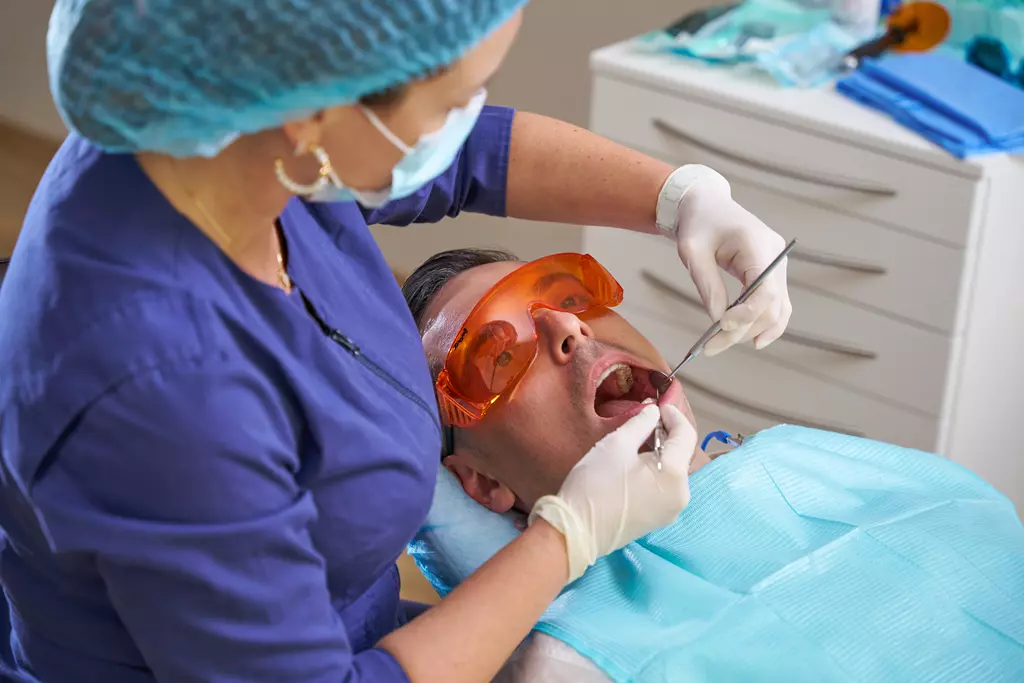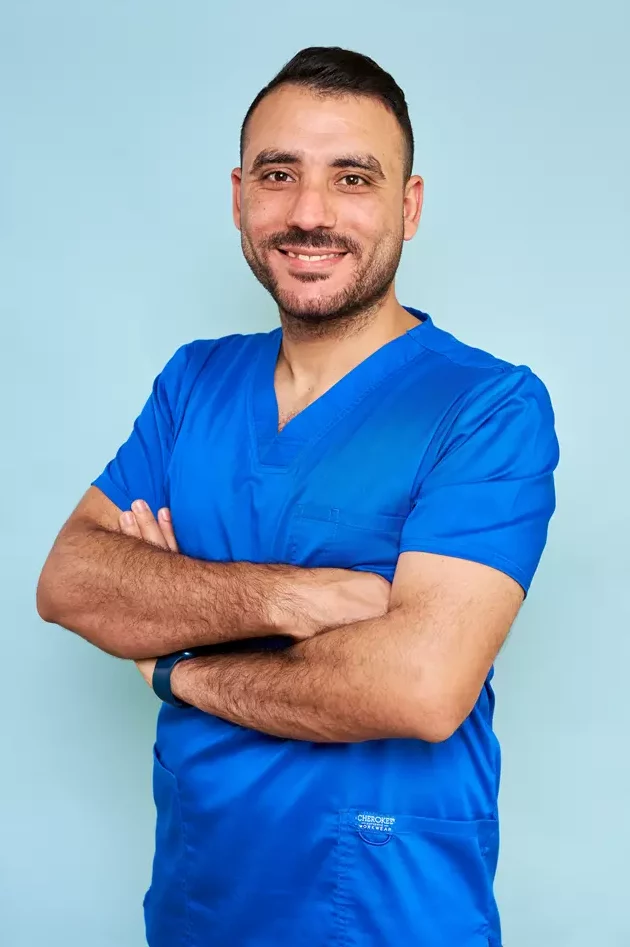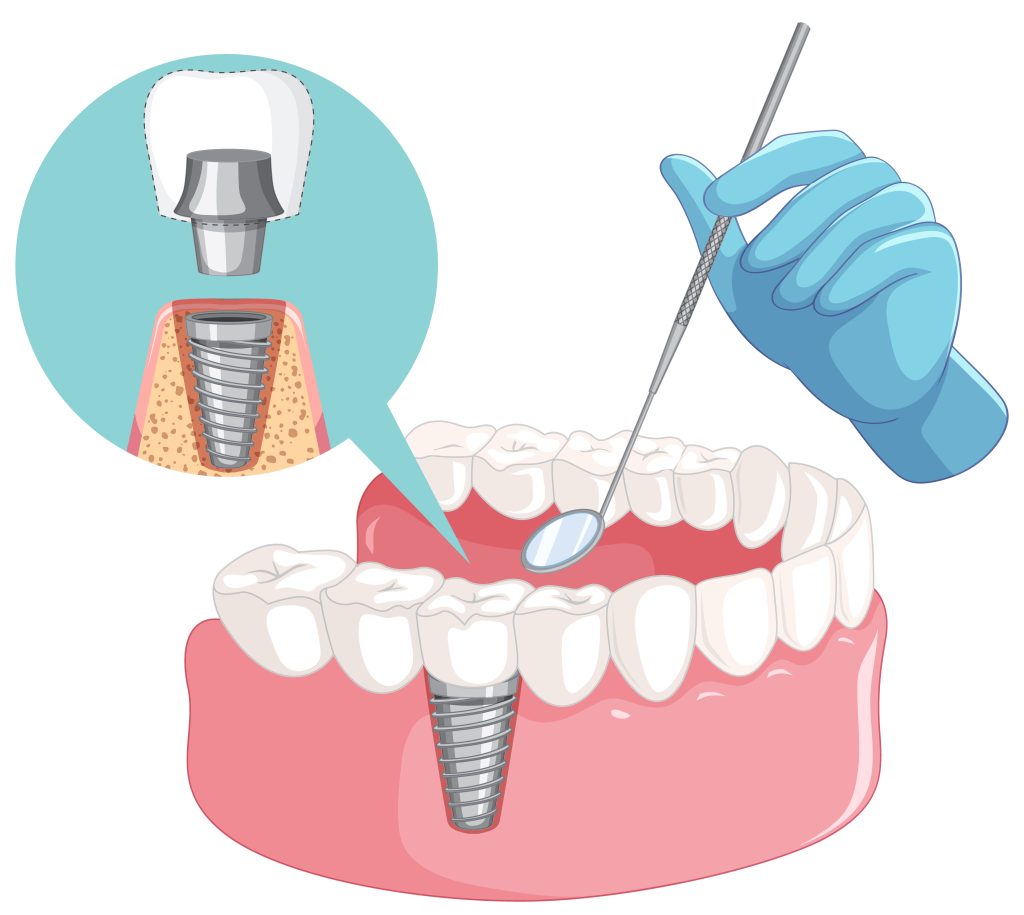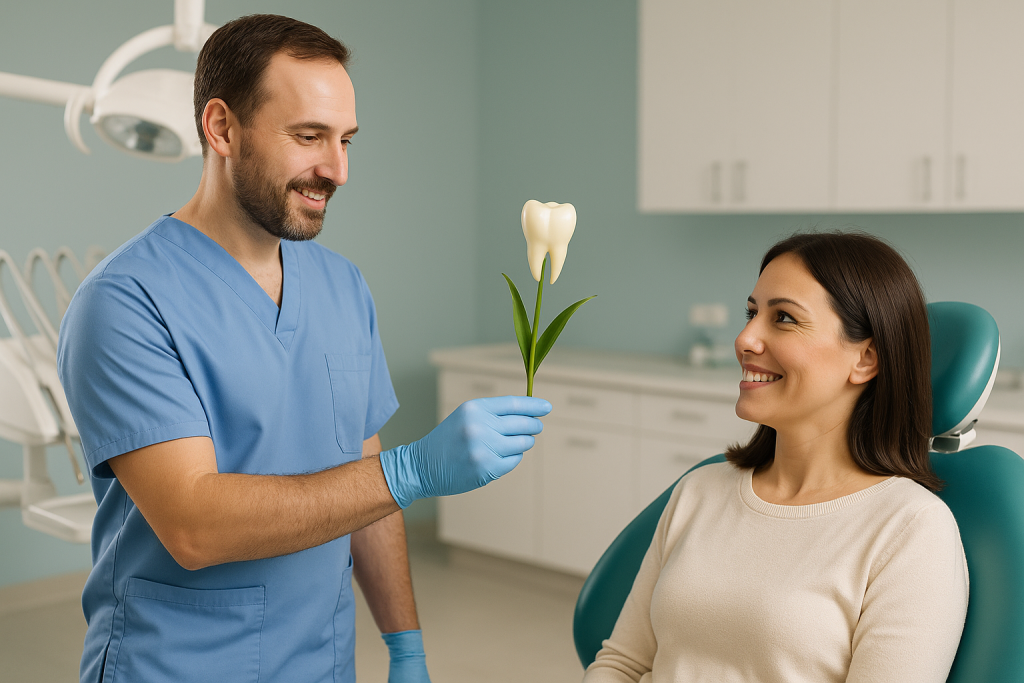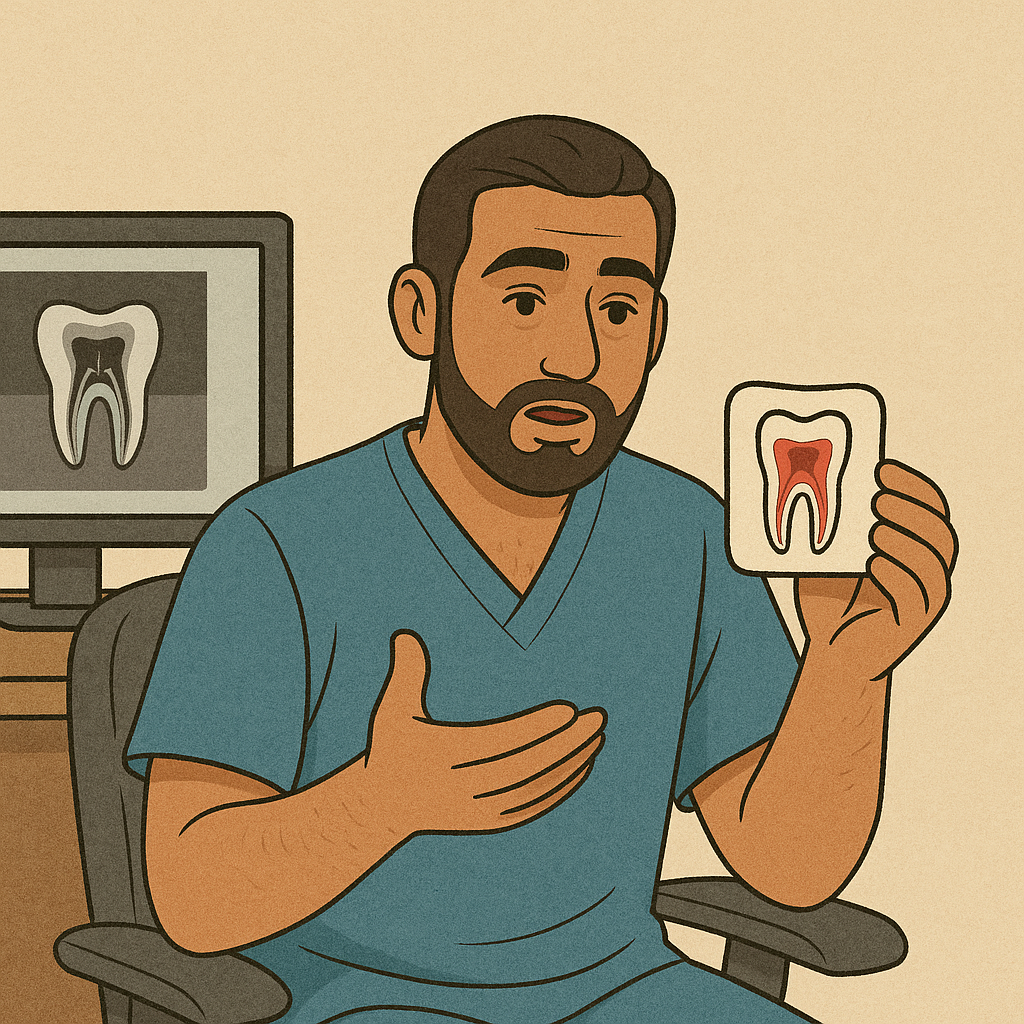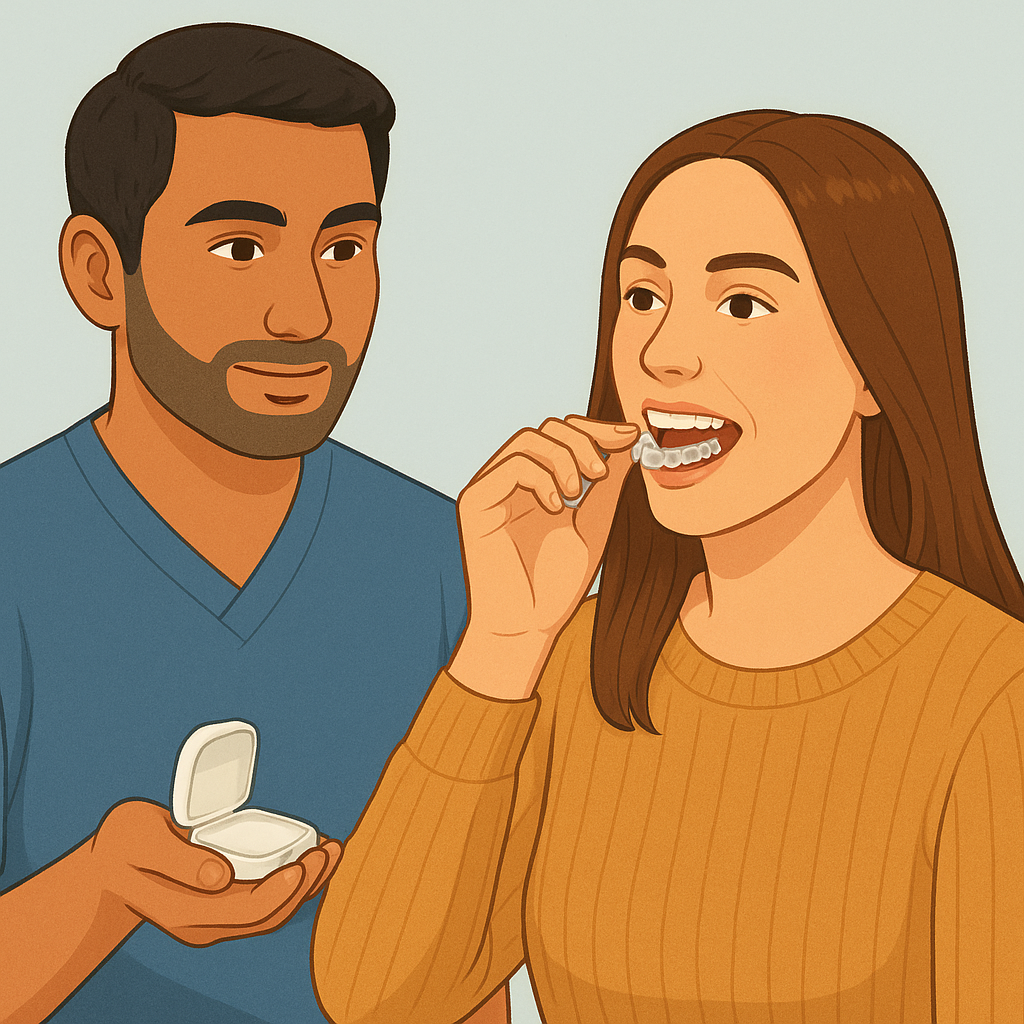If a toothache is keeping you up at night, you are not alone. Most severe tooth pain comes from the soft tissue inside the tooth, the dental pulp. Our first step as your dental team is straightforward. We determine whether the pulp is irritated but able to recover, which is called reversible pulpitis, or inflamed beyond self-healing, which is called irreversible pulpitis. Once we make that diagnosis, we choose the least invasive treatment to stop your pain and protect your tooth.
What pulpitis is, in everyday words
Pulpitis means inflammation of the nerve and blood vessels inside the tooth. The most common reason is deep tooth decay. Other causes include fractures, a heavy bite on one spot, or repeated dental work on the same tooth.
There are two main forms.
- Reversible pulpitis. Cold or sweet foods make the tooth zing for a few seconds, then it settles. There is no pain on its own. The pulp is irritated but still healthy enough to recover once we remove the irritant and seal the tooth.
- Irreversible pulpitis. Pain lingers after cold or heat. You may feel a deep throb that starts by itself, often at night. Biting can feel sharp or electric. In this case the pulp cannot heal without active treatment such as vital pulp therapy or a root canal.
Both conditions are treatable. The key is an accurate diagnosis and a good seal against bacteria.
How we diagnose the problem
Your description matters. Tell us when the pain started, what triggers it, and what helps. In the clinic we perform:
- Simple tests for temperature and gentle biting, which help us understand the stage of inflammation.
- Careful X-rays of the tooth. In some cases we use 3D imaging to see the exact shape of the roots or to look for cracks.
- Inspection under the microscope when we start treatment. This helps us confirm what we saw on the tests and images.
You will hear plain language at every step. I will show you the images and explain what they mean for you.
If the pulp can recover, here is what we do
When the picture fits reversible pulpitis, our aim is to remove the irritant and let the pulp calm down.
- Remove the decay carefully under the microscope.
- Place a protective liner if the cavity is very deep.
- Isolate the tooth with a rubber dam so saliva does not contaminate the work.
- Place a bonded, tooth-coloured filling with a tight seal.
- If the bite is high, we adjust it a little.
- You can use simple pain relief medication for a day or two if needed.
Most people feel much better immediately. Any sensitivity that remains usually fades over several days. This is effective reversible pulpitis treatment and it helps you avoid more complex procedures.
If the pulp cannot recover, here are your choices
When tests point to irreversible pulpitis, there are two proven paths. We choose together based on your symptoms, the tooth, and your goals.
Vital pulp therapy, also called a pulpotomy
Sometimes only the top part of the pulp is inflamed while the rest is still healthy. In those cases we remove the diseased portion, place a modern bioceramic material over the healthy pulp, and seal the tooth tightly. The benefits are shorter appointments, preservation of natural vitality, and often lower cost than a full root canal. This option is also very helpful in young teeth and in some cases of chronic hyperplastic pulpitis, when a red, mushroom-like tissue grows from a very open cavity.
Root canal treatment
For most adult teeth with symptomatic irreversible pulpitis, a root canal is the most predictable way to stop the pain and keep the tooth. Here is what that means in practice.
- We make the tooth completely numb and isolate it with a rubber dam.
- Under the microscope we create a small opening to reach the canals, remove the inflamed pulp, and clean the inside of the roots.
- We shape the canals gently with flexible instruments and wash them with solutions that dissolve tissue and disrupt bacteria.
- We fill the canals three-dimensionally and place a strong core to seal the access.
- Many teeth can be treated in one visit. Some complex molars or retreatments are safer in two visits.
After a root canal, back teeth usually need an onlay or crown to prevent cracking. We discuss this in your plan so there are no surprises later.
Pain control before, during, and after treatment
- Getting numb. Even teeth that are hard to freeze can be numbed predictably with modern techniques. Please tell us if you still feel anything and we will add more.
- Sedation. If you are anxious, we offer nitrous oxide. When appropriate we can also use oral or IV sedation. You will be safe and monitored at all times.
- Aftercare. Mild tenderness to biting is normal for one to three days. Chew on the other side and take the pain relief we recommend, unless your physician has told you otherwise. Call us immediately if you notice swelling, fever, or pain that increases rather than decreases.
A note about antibiotics. Antibiotics do not treat inflamed pulp and they do not shorten toothache when there is no swelling or fever. They are reserved for spreading infection or situations where urgent dental care is temporarily impossible. The quickest relief always comes from proper dental treatment.
Chronic and hyperplastic pulpitis, and when we use crowns
Some teeth have long-standing inflammation with little or no pain. Others grow a soft tissue polyp inside a very open cavity. In these cases we either perform vital pulp therapy or a root canal, then restore the tooth with a bonded onlay or crown. Teeth that have lost a lot of structure or that show cracks need a protective restoration to spread chewing forces and prevent fractures.
Why many patients choose TRUE SMILE
Treatment under a microscope for accuracy and tooth preservation.
- Clear explanations and photos of your case.
- Modern pain control and options for sedation if you are anxious.
- Same day sealing of the tooth whenever possible to prevent reinfection.
- Transparent pricing and a written plan before we start.
What to do today if you are in pain
Avoid heat. Sip cool water for short relief. Take the pain relief you usually use, unless your physician has advised against it. Do not start leftover antibiotics at home. They rarely help and they can hide symptoms.
Call us and tell the team that you have night pain or pain to heat. We will find the earliest convenient time to see you.

